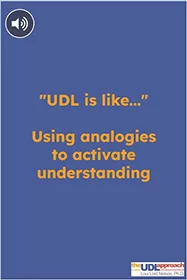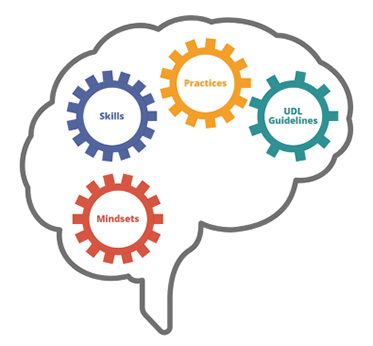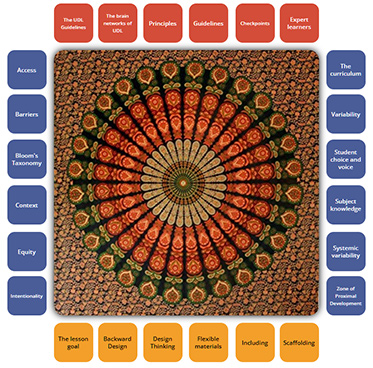What is UDL?
The UDL World
The world is awakening to Universal Design for Learning (UDL) and that is exciting! There is a call for increased inclusion and many see UDL as a tool that can help us all move in that direction. But because UDL is so rich and dense with information, it can be misinterpreted, misapplied and even minimized. To help guide a deeper understanding of UDL, I’ve created three products.
UDL is Like…Using analogies to activate understanding

Using six analogies, this digital book will help you understand the premise and promise of Universal Design for Learning so we can all support every learner.
The UDL Gears

The first graphic is called The UDL Gears. Created with the global context in mind, the gears break down the mindsets, skills, and practices that support the application of UDL. Using the analogy of gears, the cogs on the edge of gears make a series of gears turn together. If one of the gears is missing a cog, the machine does not work as effectively but it still works. With all of the cogs in place, though, the machine is effective and efficient. As you explore the cogs on the edge of each UDL Gear, you will see what those who have been applying UDL around the world believe is important. The language used to create The UDL Gears was purposefully chosen so it can be translated across languages and cultures.
The Tapestry

The second graphic is called The Tapestry. This graphic uses the analogy of a tapestry to consider the threads that underlie the application of UDL. Those threads include the constructs, concepts, practices, and processes that underlie UDL as well as some additional information about the content of the UDL Guidelines. The goal of The Tapestry is to show what propels UDL and drives its purpose.
Why is this information important? UDL is, by definition, universal. That universality can feel overbearing and undefinable. My hope is that The UDL Gears and The Tapestry create positive parameters to guide the intentions and practice of those applying UDL.
